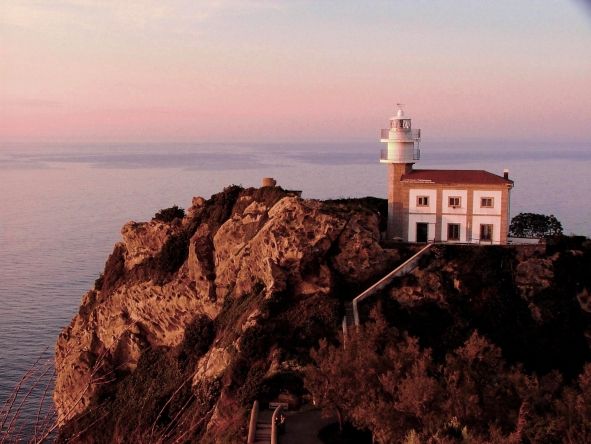Viewpoint overlooking the sea
The charm of Getaria lies in its views, its coastline, its nature, the idyllic atmosphere of the Bay of Biscay and tradition that surrounds it. Getaria is like an eternal viewpoint overlooking the ocean, one of those villages on the Basque coast that is not difficult to fall in love with. There has been much discussion about the origins of the word Getaria. Some consider it to derive from the Latin word "cetaria", which means "fish provision". However, it is more likely, as in the case of the nearby town of the same name on the Basque-French coast, that it comes from the word "cataria", which refers to a place from which one can look out over the sea.
Getaria is certainly a vantage point overlooking the sea, and throughout the municipality there are places with a privileged view of the entire Basque coast. Within the old quarter we should highlight viewpoints such as the Elcano monument, the Bistaona viewpoint located at its foot, or the Katrapona square on the seafront of the walls. There are also unbeatable views of Mount San Antón, the rural village of Askizu and the Garate hill.
Mount San Antón

Getaria's mythology includes its Mouse, although it is true that no Getarian calls it a "mouse", but rather the island of San Antón, because that is how it was until, with the efforts of the locals, it finally cast anchor off the coast. At the General Assemblies held in Segura on 24 November 1563, Getaria reported that it had created a tongue of land between the church and the port, "where the sea passed through".

Mount San Antón was covered with vegetation, which served as a natural shelter for the various defensive batteries that were located there. This military function dates back to the time when it was still an island. As late as September 1856 (shortly after the Carlist War) it was still being used for military purposes.
But the most primitive function that the island of San Antón had was as a lookout post for the whale watcher. Although not many documents exist, it is safe to assume that the capture and commercial exploitation of whales was the main economic activity that sustained Getaria at least until the end of the Middle Ages.
Nowadays, the Getaria Mouse is one of the town's tourist attractions, and is the place to take a short route on foot to reach the top, passing by the lighthouse, which is still in operation.
The route to follow, like all local trails, is marked in white and blue, which can be followed along the entire route, which is impossible to get lost on. The route starts at the end of the pass, under the slopes of the mountain itself. Simply follow the road up to the lighthouse area, where you can enjoy the first viewpoint. From this point, you can choose to follow the road or take the stairs. Leaving several viewpoints behind, you will finally reach the top of the mountain, where you will find the building known as Katxapo, next to the lighthouse, the old watchtower of the mountain. From here, the watchtowers monitored everything from possible galleys (or corsair ships) that might reach Getaria to the appearance of the coveted whales.
Once at the top, we can choose another route to go down, as it is a circular route, which always starts and ends at the same points, no matter which way we go.

 Español
Español Euskera
Euskera Français
Français